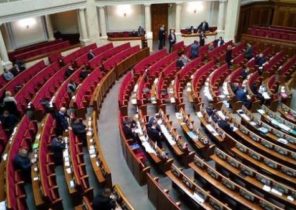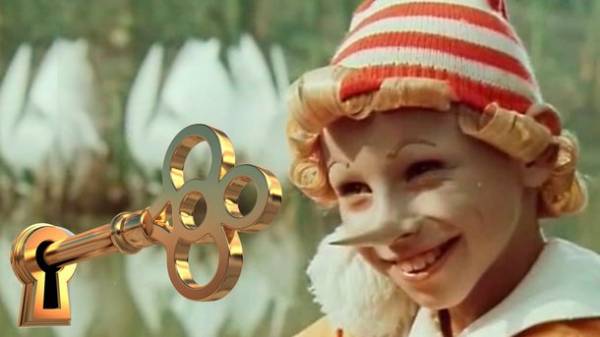
One therapist once told me that a huge impact on a child’s development, in addition to the education and behaviour of parents plays his favorite fairytale hero. And this influence much more than we used to think. At a time when a child develops the Foundation of his future personality, and he looks a hundred times the same movie or reads ten times the same tale — it was not in vain. He somehow like this the hero of this particular tale. And the fairy tale world becomes his family, friends, understandable and clear to his current worldview. And the behavior of a favorite hero — wants the child or not, perhaps even against his will, becomes a revealing example of what should or should not behave, how to solve a particular problem.
Mom, dad, or caregiver, the child looks upward. Adult for him — some gods are omnipotent. Perhaps he wants to be, for example, as a dad, but it is a dream and is unattainable, a fairy-tale hero — here it is. He is always with him, always there. His style appeals to the child. He looks at him with admiration, but as his equal. He easily identifies himself with them. Therefore, some psychologists, knowing what a favorite fairy tale was the patient in childhood, it can be assumed, approximately what the matrix was based the whole of his subsequent life.
Yes, we are all different, and each person is unique and inimitable. But agree that people whose favorite fairy tale character was, say, Carlson, act differently than people whose favorite character was, for example, Cheburashka, or Leopold the cat. And the laws, which are built one or the other tale, firmly entrenched in the subcortex of our subconscious, being thus the Foundation upon which was erected the building of our personality and our worldview, as well as methods of our participation in the total process of the universe.
There is a system of allocation of people into various types. Therefore, you can understand the predisposition to a certain behavior strategies. For example, Jung tried to divide mankind into archetypes, saying that not only people, but the characters are basically a specific set of characteristic features that distinguish them from others. This set of characteristic features peculiar to it alone, or rather his prototype, originating in ancient myths and legends. As well as all sorts of subjects long considered and dealt with, it is not surprising that the ancient Greek philosophers noticed in the lives of people certain laws and was not surprised that one person’s life strikingly resembles the life of another historical figure, and then claimed: there is nothing new, and everything was. Yes, times are changing, and the new era creates new stories, but people-unchanged. Writing a new tale, they only give new names to familiar childhood faces. And creating a character, give his personal properties, which was acquired in the process of life, beginning in early childhood when they listened to or read about the adventures of their favorite characters.
RED GRAPH
For example, Alexei Tolstoy from the main tale of his life “the Golden key, or adventures Buratino”, which grew more than one generation. But the most popular tale still had during the childhood of our fathers and grandfathers. And I understand why it was and why people who grew up on this tale, life was easier in Soviet times, or rather, during the second half of the Soviet Empire. You can even trace what change has been the adventures of Pinocchio with time.
It is known that Alexei Tolstoy — Red Earl, as became his calling after his return to the land of the Soviets of emigration — was not going to write a story with an original plot. No, he was going to just translate to Russian language for a long time he liked the tale of Carlo Collodi “Pinocchio”. In 1933 he signed a contract for a remake of Pinocchio. First he was distracted by the novel “Peter the First”. Then the trilogy “ordeal”.
Gradually from a freelance artist he finally turns into what he probably unknowingly blurts out the tale — a puppet, the false puppet, of a clown-entertainer. Here he is invited to a trip to the white sea canal, along with other Soviet writers. Everyone understood that he would have to pay such high confidence and will have to write a glowing report about the greatest construction of all time, which was done by hands… prisoners. And this free, essentially, slave labor and had to sing the best writers in the country. Tolstoy was no exception.
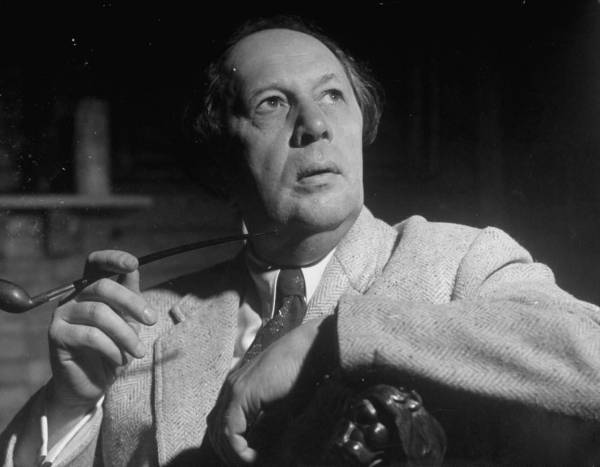
Gradually of free artist of the Soviet count Tolstoy turns into a lying puppet, red clown-entertainer
And he showered all kinds of blessings: a new home, a car with a personal driver… he was elected to the Presidium of the Union of writers. It would seem that the life smiled to those who have so long sought to achieve heights and at least partially closer to the glory of his distant relative and namesake of the famous. His books are published in millions of copies, the plays stage plays in the theatres… And in 1935, when, having survived a heart attack, which was caused not only unbridled way of life, but tormented his conscience, and the doctors forbid him to work, and he began writing stories. And it’s not even a loose retelling of the Collodi tale, as claimed by the author, but a completely different thing, with a couple of storylines in contact with the source.
By the way, “the Golden key, or adventures of Pinocchio” really was the key with which he could open the door to fame and wealth. The project has brought to the writer not less money and popularity than all the other work of the writer, together. First written tale. Then the same piece for theater in 1936. Then, in 1937, was written in the script.
THE MYSTERY OF THE SOUL
Few researchers pay tribute to the work of Tolstoy, considering it only a whim of the writer. In fact, the tale can tell more about a writer than all his autobiographical stuff. Besides “the adventures of Pinocchio” now can be considered the key to the secret mystery of the soul of Alexei Tolstoy. Here it is what we use. For the proceedings of this tale not only tells us much about the author but about the parents of our parents who began their journey with multiple rereading and adoration of this tale. Analyzing the tale and its hero, we can understand part of one of the generations of the USSR, and then — to come close to figuring out who they were and who could be we. But
most of us were already different favorite characters.
IN SEARCH OF YOUR KEY
Tolstoy has changed not only the name of the main character. First, changed his entire essence, and only in the end of the first version of the manuscript, he decides to change the name. There is clearly that Tolstoy understood the extent to which his hero, and the story in General different from the original. And differences weight. They are bright and not the best characterize Pinocchio, as well as the author as Tolstoy might not track consciously, did hero tales of his alter ego — has been separated Pinocchio from Pinocchio and brought him closer to his inner self.
Instead of moralizing history, we have a dashing story about not very smart, but cheerful and funny man, who for the sake of lofty and noble goals, as well as
e for relative freedom in the work, agrees to become the property of the puppet master in life. The obvious metaphor for his life of compromise.
The name of Pinocchio originates from the Italian for “pine nut”, while Pinocchio comes from un burattino, which means a puppet, controlled puppet. It all turns upside down. And too simplifies the initial intrigue. What’s the point?
Once thought I understood. Figured out that it was possible to explain simply: Tolstoy was so mediocre writer that couldn’t appreciate and keep the obvious advantage of the very essence of the fairy story.
But not so stupid she was fat. And was by no means incompetent. What happened? Maybe, who knows, it was originally intended? And it’s all been done, and intentionally! In order to make clear to posterity what is the difference between the free world where even fairy tale wooden doll has all chances to become a real man, and Soviet country where a totalitarian regime to freedom can count any child if you take the main condition will be a puppet. Obedient or spoiled — a separate issue! Most importantly, be a doll and take these things for granted. What is man in the USSR? Puppet! The doll, which allowed to get an education and be happy, if she, the doll, will make the right choice. Choose the right theatre and
his master.
LOOK AT THE ROOT
In fact, the whole story of the adventures of Pinocchio is a story about the adventures of its author, the thickest, of course, if not be taken too literally. In short, Tolstoy or unconsciously did that on purpose to such a strange way to confess and to communicate with future researchers of his life and work. It is clear, for example, in the manuscript of the play “Golden key”. Tolstoy wrote the play, sometimes accompanying written own drawings. So, for example, opposite words Malvina: “I miss theatre. I’d like to make your own puppet theatre. We would have composed pieces themselves would sell tickets… Without lashes Carabas”. Nearby, suddenly a pen friend all over the country the profile of a mustached man. Same profile with a pipe appears after the opening of the theatre… it is Clear that Stalin in Tolstoy be associated with someone who can give the artist the opportunity to create their own theatre and to get all out, if not to deprive of the right to control all “Karabas-Barabas” from censorship.
PINOCCHIO VS PINOCCHIO
What else is the difference between Pinocchio and Pinocchio? Both, as you remember, a long nose, who both love to poke into other people’s business and secrets. But Pinocchio’s nose grows to monstrous proportions with every word of untruth. That is, the more Pinocchio lies, the sicker he gets, the uglier he is, and the farther from his dreams — to become a man. The lesson here is that any kid, namely: to lie is bad.
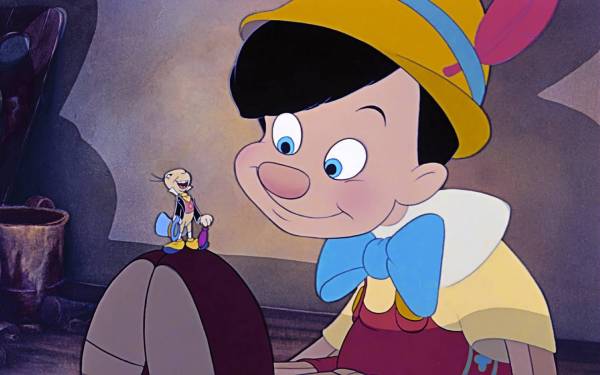
“Pinocchio” Of Collodi. To teach children the right thing
Quite another thing — the hero of the tale “the Golden key”! Lie Pinocchio does not issue. He is lying no less, and even more, but he was not always a lie hurts. On the contrary, often lying, cheating and tricks Pinocchio help either him or his friends. In extreme cases it lies interferes with the plans of the negative characters. Roughly speaking, sometimes lies and hypocrisy, benefit! As you can see, all within the Bolshevik rules: the end justifies the means!
Although it is possible to see something more. After all, if the hypothesis that Pinocchio is the alter ego of Tolstoy, the author through a tale, among other things, declares that he, as an artist, forced to seek and proclaim the truth and to help people to be deceived and to believe in fairy tales for the common good. But it was in the beginning and in the days of writing stories.
However, three years later Tolstoy amused themselves with illusions about freedom of creativity. In his notebook in 1936 there are few lines, which the researchers attribute to the play or script about the adventures of Pinocchio, namely, the rhymed lines of the song for the dolls: “Sparkle bright candle/ Dancing men/ What am I not fun/ Head hung I/ Our host quick/ Pulling the strings…”.
In these lines, confirming a clear identification of the author’s “I” with the doll, no longer, as in all future scripts, there is no much hope that Tolstoy believes in free art as puppets. And if the author was trying to invest in the tale the hidden meaning that explains and partly justifies his own cunning behavior in games of the artist with authority, now he, Tolstoy, ready sad to admit obvious defeat. For doll is a doll, and she comes to life only when the puppeteer “quick pulling the strings”.
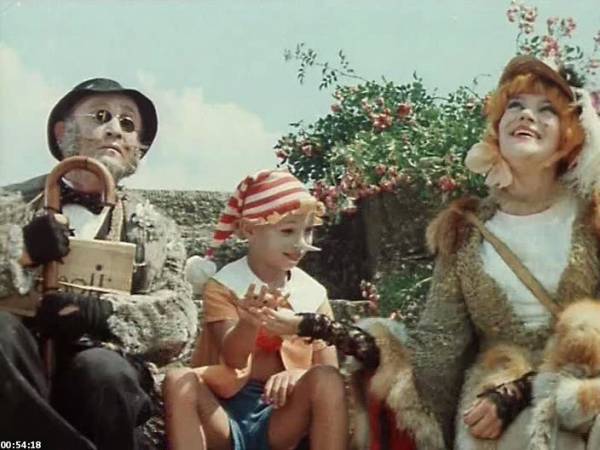
Buratino Tolstoy. Tutorial on survival
For those children and not notice. Once Tolstoy, like all true creative people, was naive as a child. But the child killed in the Large Thick-conformist, a coward and greedy for fame and luxury. And the children believe fairy tales. For them dolls — live always. But in real life it does not happen.
WHY THE TRICKSTER TAXIS
Only because if the doll is alive, she someone managed, and if it is controllable, neither of which freedom is not out of the question. For freedom from the puppet master (not important — good, evil) is one — to immobilization. That is, death. If you are a doll and don’t want you managed, then you either hang on a nail, or throw at all.
THE POWER OF FASCINATION. Pinocchio — not a particularly good role model! But he is forgiven because he is cheerful, charismatic, good at heart gentleman! He, like any trickster, positive and charming hero with negative traits, but most importantly, his strength is in unkillable negative charm.
Usually a fabulous hero gets all dreams after a series of trials, but only when he’s doing the right thing, honest, noble, selfless and sensitive. But Pinocchio and in the final, and in the process tales are usually rewarded for the wrong behavior and not always good things. From sticks to make the puppet who can walk and talk after he nearly drove crazy, Giuseppe, and then another and embroil the two old men.
Further — more. Geppetto sells his coat and buys Pinocchio food and the alphabet after due to the harmful nature of pranks and the latter almost kills a rat. Karabas gives him money after he, albeit unwittingly, discovers the secret of the painted hearth. And tortilla gives Pinocchio Golden key after he is rude to shown him hospitality. He is constantly lying, making it up, fooling and laughing at the foibles of friends. He doesn’t listen to good advice good characters and believe all sorts of scoundrels. Wants to get rich, to buy Pope Carlo jacket. Although ABC, bought for the money from the sale of the jacket he did not hesitate to sell. Geppetto wishes that Pinocchio was educated, and Pinocchio to school was boring. He is generally stupid, greedy, rude, proud, and boastful… And for the finale, unlike Pinocchio, Buratino does not change.
Almost all major myths, the trickster is a friend of the main character, and only in the USSR, the trickster becomes the main character in every good work. More! When the trickster became the main character, the pieces have a chance to become a masterpiece. Examples? Benya Krik in Babel, Chapaev Fadeeva, Bender from Ilf and Petrov. It is for adults. And children’s literature in the person of Alexei Tolstoy gave Pinocchio. For many of our grandparents and then to their children Pinocchio became a favorite hero in childhood. Or one of favorite…







